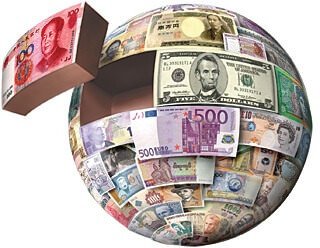World Banknotes: Greece, Guatemala, Guernsey.

Hello, dear reader! In today's journey with bills, we will find ourselves in Greece and see the ruins of an ancient temple, in Guatemala we will find an unusual freedom-loving bird, and all will end on a small island in the English Channel. I hope that the information provided will be useful and informative to you.
 Greece
Greece


1000 drachmas 1987
The drachma is one of the most ancient monetary units of mankind. The name comes from the ancient Greek δραχμή, which means a handful. In ancient Greece, drachma was not only a monetary unit, but also a measure of weight.

On the front side in the upper part of the banknote is an inscription in Greek Τράπεζα της Ελλάδος - Bank of Greece. The central and the main part of the bill is the head of the statue of Apollo. One of the most revered gods, Apollo patronized art and creativity, predicted the future and was the personification of the sun. In the lower part, slightly to the left of Apollo, is an ancient Greek coin.

On the reverse side of the note are the ruins of the temple of Hera in Ancient Olympia. The ancient temple was built in the 7th century BC and is dedicated to Hera - the goddess, patronizing the family and marriage, protecting the mother during childbirth. In the foreground, one of the most famous sculptures of antiquity is "Diskobol". The statue was made of bronze in the 5th century BC by Master Miron. The sculpture depicts the winner of the discus throwing contest, his name is unknown. Unfortunately, the original statue was lost in the Middle Ages, to this day have reached numerous Roman copies of this statue.

 Guatemala
Guatemala


The name of the monetary unit of Guatemala is derived from the name of the bird, which is the national symbol. Quetzal is a freedom-loving bird and does not live in captivity, which is why the bird was chosen as the national symbol embodying freedom.

On the front side of the banknote, on the right, there is a portrait of the politician, the president, at which the quetzal was introduced - Jose Maria Orellana Pinto. In the background, behind the portrait, is the Mayan pyramid. In the upper part of the banknote, on either side of the top of the pyramid, are the elements of Maya culture. Also in the upper part of the denomination there is a picture of a quetzal bird. Just below the plastic window, in which the portrait is duplicated, is the flag of Guatemala.

On the reverse side of the note, in the central part, is the building of the Bank of Guatemala. On the building there are carved frescoes depicting the historical moments of Guatemala. To the right of the building is the altar of the ancient Maya from the temple in Tikal. It was one of the most populated cities of the Maya. According to rough estimates, the city's population was 150,000. To the left of the building is an image of the Leyden plate found in 1864 near the city of Puerto Barrios. The name "Leiden" plate takes from the Dutch city of Leiden, where it, after all, was. The plate has images on both sides. On the front side, the ruler steps on the prisoner with his foot. On the reverse side, the date is cut out, in accordance with our calculation, meaning 320 year of our era.

 Guernsey
Guernsey


1 pound 2013
Once again we were on an island subject to the British crown. This time we are in the English Channel on the island of Garnsi.
On the front in the center is the Guernsey city market. The source of the image was an engraving from the book "The Historical and Topographic Description of the Channel Islands" published by Robert Moody in 1841. In the lower left corner is the coat of arms of Guernsey, consisting of a shield with images of three British lions. At the top of the coat of arms is a golden sprout. Behind the denomination and the below are the acanthus leaves, symbolizing immortality and life.

On the back of the banknote is a portrait of Thomas de la Rue, the founder of the world's largest company that prints banknotes and securities. Behind the back of Thomas is the newspaper "The Mirror of Politics" - his first commercial project. It was to the jubilee of the newspaper that this series of banknotes was issued. To the left of Thomas is a view of Fountain Street in 1799. In the distance, the church of St. Peter Port is visible. In the left part of the bill, in the background is the flower of the Guernsey lily.

Hello! I find your post valuable for the wafrica community! Thanks for the great post! @wafrica is now following you! ALWAYs follow @wafrica and use the wafrica tag!